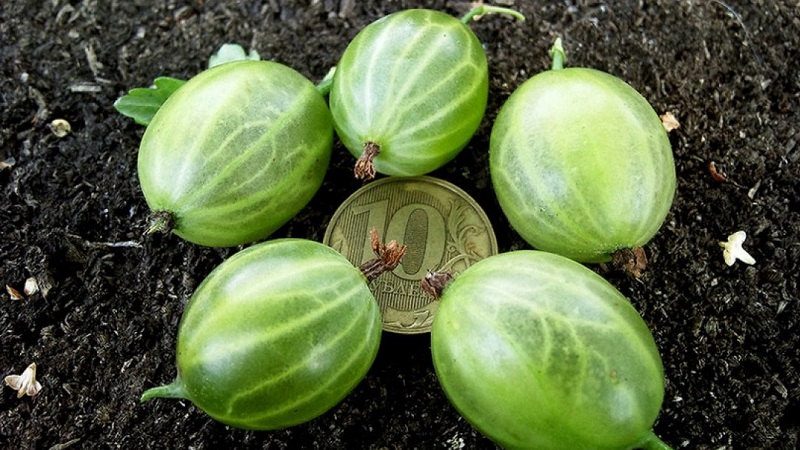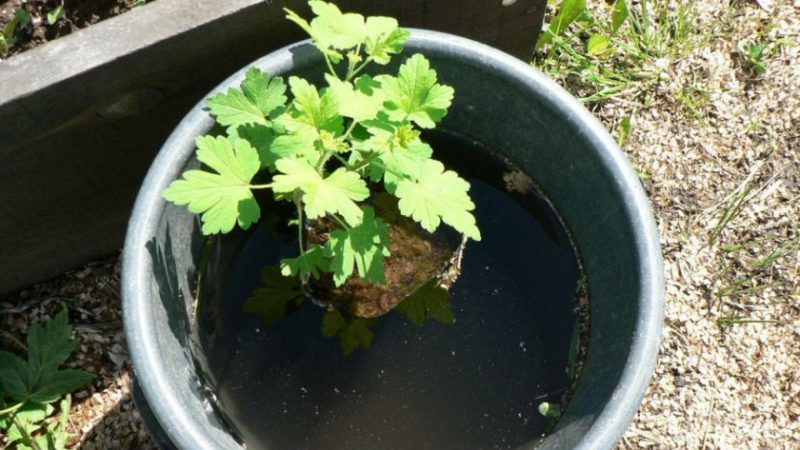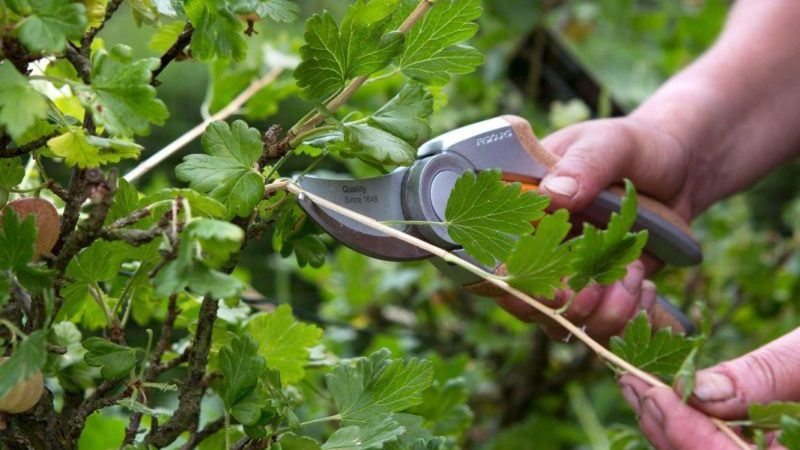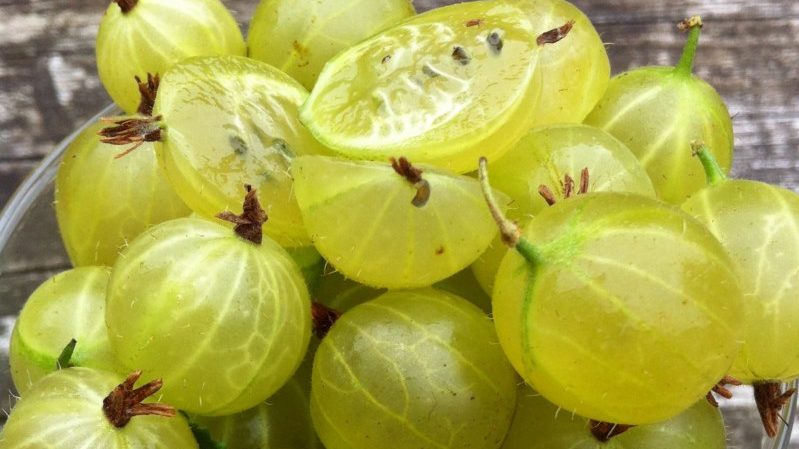How to properly plant gooseberry seedlings
Gooseberries are called "northern grapes". Indeed, the taste of this berry is somewhat reminiscent of grapes. At the same time, the shrub is highly frost-resistant and is able to grow and give large fruits even in regions with a cold climate. It is unpretentious in maintenance and resistant to negative environmental factors.
Most often, gooseberries are propagated by seedlings that are grown independently from plant parts or bought in specialized nurseries. Most gardeners recommend planting shrubs in the spring. In this case, the plant manages to get stronger and take root before the onset of cold weather. How to plant gooseberries correctly and why it is better to do it in spring - read on.
The content of the article
Advantages and disadvantages of spring and autumn planting
Planting gooseberry seedlings possible both in spring and autumn. In both cases, it is important to choose the right time for the work and follow the basic rules.
Planting times vary from region to region. If in the northern zone of Russia (in Siberia and the Urals) frosts often recede only by mid-April, in the southern regions (Krasnodar Territory) the soil freezes already in early March. In the middle zone of our country (Moscow, Moscow region), this usually occurs in late March or early April.
The time of planting gooseberries depends not only on the region. When choosing, the climatic conditions of a particular year are also taken into account. If frosts are expected earlier, then plants will have to be planted earlier in the fall and vice versa. The same rules apply for spring planting.
Spring planting is good for beginner gardeners. In this case, the readiness of the soil for planting can be assessed visually. The seedling is planted in a permanent place when the soil has thawed, but the buds have not yet begun to swell.
Important! When planting gooseberries in the spring, it is important to take into account that if the planting work is carried out late (when leaves appear on the trees, and it is hot outside), the seedling may not take root.
In the fall, gooseberries are planted five weeks before the first frost. This is usually done at the end of October. So the plant will have time to take root, but will not start throwing out new leaves.
When planting in autumn, you have to rely on weather forecasts, which are not always correct. If the cold comes earlier, the seedling will not take root and will die in winter. If the heat is held for too long, the plant will start throwing off molts and shoots that will freeze in winter.
Choosing a variety for spring planting

All gooseberry varieties are suitable for spring planting. The culture is chosen depending on the climatic conditions of the region, as well as the characteristics of the plant.
For Siberia and the Urals, frost-resistant varieties are suitable. They are resistant to adverse factors and easily endure cold winters. As a rule, they do not have too large and sweet berries, but there are exceptions. The list contains several of the most popular options:
- Seedling Lefora... An early variety, seedlings and cuttings of which quickly take root. The berries are medium-sized, sweet, red in color. The yield is high. There is resistance to fungal infections.
- Malachite. Mid-season variety. Produces large berries of bright green color, with "tan" on the side facing the sun. The taste is sweet with sourness. Drought tolerant. There is a high immunity to powdery mildew.

- Altaic golden... Late frost-resistant variety.Produces large, yellow-green oval berries with a waxy bloom. The taste of the fruit is sweet and sour.
Varieties for central regions should also be resistant to cold snaps, but to a lesser extent than for northern ones. The list contains several varieties that are often grown by gardeners in Moscow and the Moscow region:
- Eaglet. Early maturing variety. The berries are dark purple, almost black. The taste is sweet and sour. There are no thorns on the shoots. There is immunity to anthracnose and powdery mildew.
- African. Fast-growing variety. The fruits are almost black, medium in size. The taste is sweet and sour with a slight black currant aftertaste. Resistant to powdery mildew.
- Spring. Ripening dates are early. The berries are large, sweet, yellow-green in color. Differs in resistance to temperature extremes, powdery mildew, septoria.
For the southern regions, any gooseberry varieties are suitable. Variants grow here, producing the largest and sweetest berries.
Selection of quality planting material
In order for the gooseberry to take root, not get sick and give an early harvest, it is important to choose a healthy seedling. When buying planting material, pay attention to the following parameters:
- Root system. A quality seedling must have at least three skeletal roots. The presence of small additional roots is important, they should not be dry or rotten. The root system is checked for spots, growths, holes and other traces of diseases and pests. The fresh root on the fracture should be light and moist.
- The size. The optimum height of a gooseberry seedling is 40 cm.
- Ground part. 2-3 shoots are required. They don't have to be dry. What is important is the absence of cracks, peeling, stains, build-ups, etc.
Saplings are either closed (in an earthen coma) or open (bare roots) root system. The second option is preferable, as it takes root better.
Planting a seedling
To grow a healthy, productive gooseberry bush, it is important to pay enough attention to planting. Preparation for work is equally important.
Preparation of planting material

Before planting a seedling, it is prepared. Plants with a closed root system are watered with a light pink solution of potassium permanganate, and two hours later - with a root stimulator ("Kornevin").
Seedlings with an open root system are first soaked for 2 hours in a light pink solution of potassium permanganate. Then for 12 hours in a growth stimulator. Before planting, the roots are dipped in a clay mash.
Before processing, the root system is examined. All dry small roots are removed. Do the same with the aerial part of the bush, cutting off all dry and damaged processes.
Before planting, cut off the upper part so that 2-3 buds remain on each shoot. If the root system is well developed, up to five buds are left.
Site selection and soil preparation
Gooseberry is a light-loving plant. If you choose a well-lit area for it, the berries will be especially sweet. Semi-shaded spots are fine too. It is impossible to plant seedlings in the shade, this will reduce the yield.
Gooseberries are planted in flat areas, but they do best on higher ground. Experienced gardeners even make the hills artificially.
You can not place the plant in lowlands, on swampy soils, as well as in areas where moisture is constantly stagnant. In such places, the plant will often hurt and die.
Groundwater should not be located too close to the surface (closer than 1.5 m). It is not recommended to plant gooseberries near currants, as they are affected by the same diseases and pests.
For spring planting, the soil is prepared in the fall. The area under the gooseberry is dug up, cleaned of weeds. The soil is mixed with mixed with 6 kg of humus or rotted manure, 30 g of superphosphate, 25 g of potash fertilizers.
The optimum acidity for the culture is medium and slightly low, pH 5.5-6.5. Even slightly acidic soil will negatively affect the growth of gooseberries.Acidic soil (pH less than 5) is "deoxidized" with ash or dry lime. Lime is applied in the spring to a depth of 25-30 cm and shed well. The effect of this method is long, so it is repeated every 4-6 years.
Important. To increase acidity in highly alkaline soils, they use a special fertilizer - marshy peat.
In the spring, the soil is dug up again. The place where the holes will be dug is watered with a hot solution of copper sulfate for disinfection (3 g per 10 L of water).
Step-by-step instructions for planting seedlings

Planting gooseberries in a container with a closed root system and seedlings with an open system has some differences. However, the general system of actions will be the same.
Step-by-step instructions on how to plant gooseberries in spring:
- Dig holes for gooseberries with a diameter and depth of 50x50 cm - 60x60 cm. The soil taken out of the hole is mixed with a bucket of compost, 5 kg of lowland peat, 0.4 kg of bone meal, 0.2 kg of ash.
- An earthen mound is formed in the center of the hole. If the seedling has a closed root system, then just a third of the hole is filled with soil mixture.
- The seedling is placed in the hole, evenly distributing the root system around the mound. Plants from the container are simply transferred into the hole.
- The depression is filled with soil, alternately compacting the layers. At this stage, the root collar is not buried.
- The plant is watered abundantly with warm water. If the soil has settled, more earth is added.
- Around the gooseberry, a trunk circle with a diameter of 1 m is made.On the edges, sides are made
- The seedling is mulched with sawdust, tree bark or peat. Some gardeners recommend raising the mulch 6 cm above the root collar.
Care after landing
In order for the gooseberry not to get sick and to develop properly, it must be properly looked after.

Step by step guide to leaving:
- Preventive treatments. The bushes must be scalded with boiling water when the snow has already melted, but the buds have not yet swollen. It is sprayed with a solution of copper sulfate (100 g per 10 l of water). The same treatments are carried out in the summer before the formation of fruits in the event that there were prolonged rains and a significant cooling was observed.
- Watering. Water the plant only if the summer turned out to be rainy without precipitation. For one watering, two buckets of water are consumed for young plants and up to five buckets of water for adult spreading bushes.
- Loosening, mulching and weeding. Around young gooseberries, it is required to constantly clear the soil of weeds, which are considered carriers of diseases and pests. After each watering and precipitation, the soil is loosened, destroying the earthen crust, which prevents normal root air exchange. To reduce the amount of loosening and weeding, gooseberries are mulched. Such a layer will also protect the plant from diseases, pests, cooling, and moisture stagnation.
- Fertilizers. During the season, feeding is applied three times. The first is when the leaves bloom. Use 1 tbsp. l. urea and 1 tbsp. l. nitroammophos, diluted in a bucket of water. The second top dressing is applied after the gooseberry has faded. To prepare the solution in a bucket of water, dilute 3 tbsp. l. potassium chloride, 3 tbsp. l. ammonium nitrate, 4 tbsp. l. superphosphate. The last time the soil around the bush is fertilized before wintering, digging 10 kg of rotted manure into it.
- Pruning. Every year in spring or fall pruning the plant... Remove old, dry, damaged and old branches. Leave strong young shoots outward from the bush. A mature plant should have an average of 20 healthy branches.
- Preparation for wintering. In autumn, the soil around the bush is cleaned of leaves and other plant debris, loosened well. Then mulch, raising the mulch as high as possible. In winter, if possible, the plant is covered with snow. If the season is cold, but not snowy, use spunbond.
Harvesting and storage

Gooseberry gives first fruit two years after planting. Some varieties are capable of setting berries within a year.
The timing of the harvest depends on the variety. The berries are picked as they ripen.Some housewives prefer to use unripe fruits for cooking.
Fresh gooseberries are kept in the refrigerator. To prepare berries for future use, they are frozen, processed into jams and sauces, and even dried.
Conclusion
Planting gooseberry seedlings in spring is more preferable for novice gardeners. In this case, it is easier to calculate the rows. Before the onset of cold weather, the plant will have time to take root and get stronger, which will help it easily survive the winter.
The technology of planting gooseberries in spring and autumn is the same. The main thing is to follow the basic rules and carry out all the necessary preparatory work.